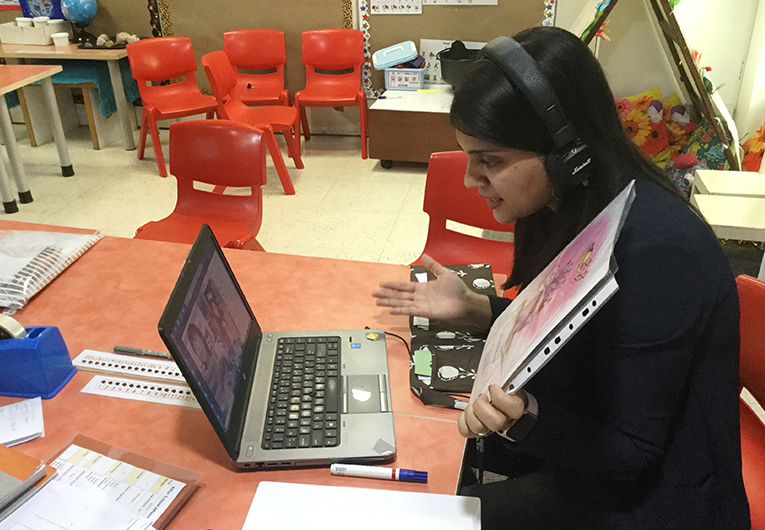This February, Monica Bahl got the best birthday gift she could have asked for–her daughter surprised her by flying in from Hong Kong. But as the technology coordinator for primary students at The British School in New Delhi, Bahl was required to quarantine herself as per the school’s guidelines, put in place as a precautionary measure against COVID-19.
“I couldn’t go to school, but that wasn’t going to stop me from teaching my students. I moved to Teams and conducted classes from home while my students were at school. I was the first teacher in the school to try it,” she says.
Moving to remote classes was intuitive for both Bahl and her students, as the management at The British School was preparing for a situation like this for a couple of months. The preparation came handy for the 57-year-old school, especially now, when all schools are shut due to COVID-19, leaving millions of students without any access to classroom education.
“For us, it is pedagogy that drives technology in our school, not the other way around. We weren’t just looking at using Microsoft Teams because of a crisis, we started using it before the crisis hit us. This process has shown the value of interaction and engagement that technology can enable; it has really been made abundantly clear. This is the tipping point. It is going to be the new normal.”
– Vanita Uppal OBE, director of The British School
“We’d been following developments around COVID-19 since January and saw how schools were impacted in China. We wanted to be prepared,” adds Satender Pal, head of IT, The British School. “We did one training workshop on Teams for our teachers with Microsoft representatives and created step-by-step guides for both teachers and students.”
“Even before the Delhi government announced school closures, we’d already done over a hundred dry runs (for classes on Teams) across the school. On the evening of March 5, the government announced the closure of primary schools and at 8:05 AM on March 6, we delivered our first class over Teams,” Vanita Uppal OBE, director of The British School says with pride.
Online learning, in the form of MOOCs (massive open online courses), has been around for years, but it lacks real-time feedback and collaboration. Distance learning is often viewed as an inferior experience as compared to traditional in-person classrooms. Would Teams be any different?
“Human beings in general thrive on social interaction, which was missing in traditional e-learning platforms. You can never really replace a teacher because the teacher provides that human interaction, but I think platforms like Teams enable a teacher to be able to reach out to their classroom remotely and continue to interact,” says Uppal.
Reaching a tipping point
So, what happens when this pandemic is behind us, and we get our classrooms back? While this might have started as a contingency plan for schools to manage disruption, online, collaborative learning is likely to be the new standard, even when schools resume their regular operations.
Case in point—teacher student interactions beyond school hours.
“I’ve installed Teams on my phone as well, so my students can reach out to me whenever they see me online. This was not possible earlier,” says Prabha Iyer, who has been teaching mathematics at The British School for over 24 years now.
“For us, it is pedagogy that drives technology in our school, not the other way around. We weren’t just looking at using Microsoft Teams because of a crisis, we started using it before the crisis hit us. This process has shown the value of interaction and engagement that technology can enable; it has really been made abundantly clear. This is the tipping point. It is going to be the new normal,” says Uppal.
Looking at moving to a virtual classroom? Here are some handy tips to help you get started and use Teams effectively to make the transition.







